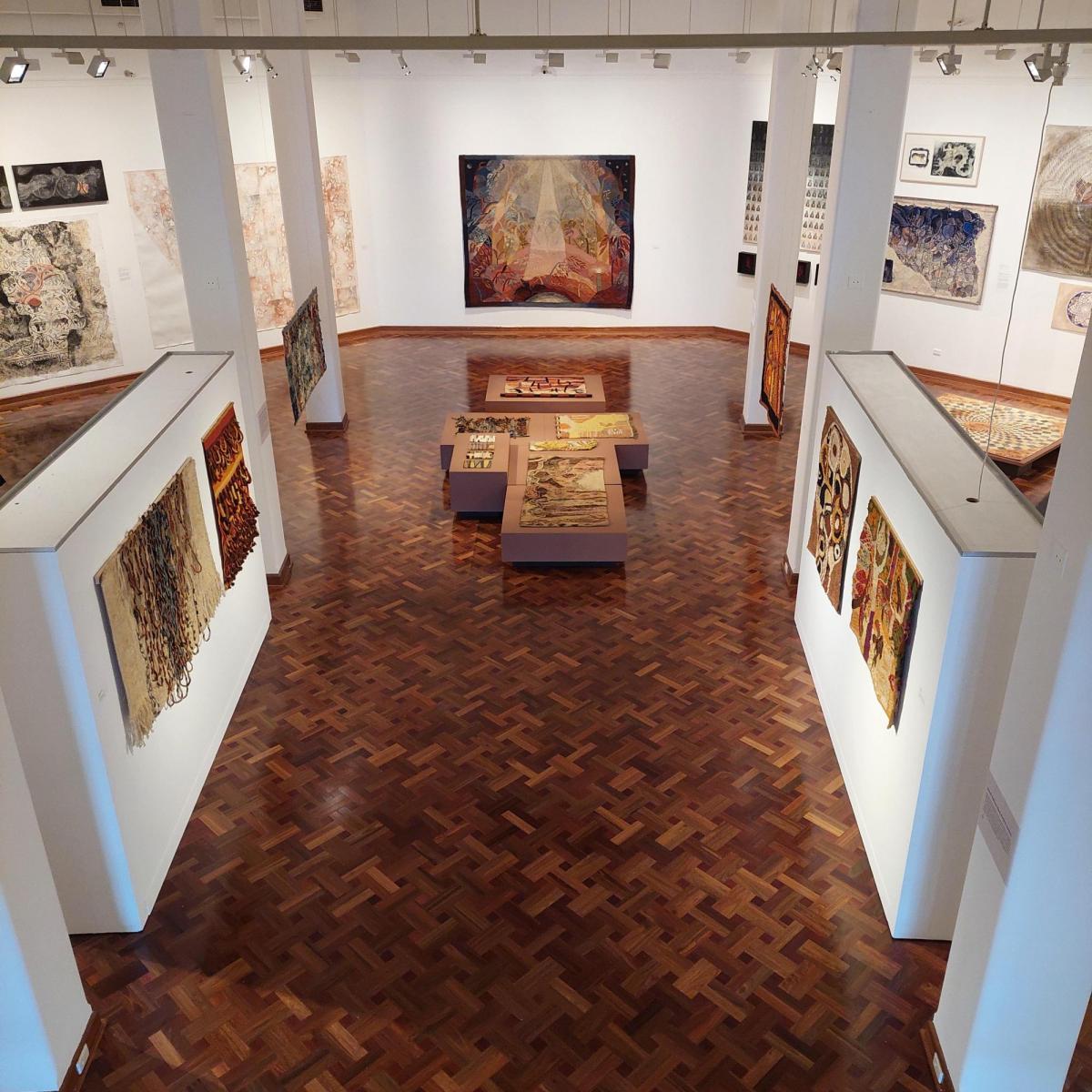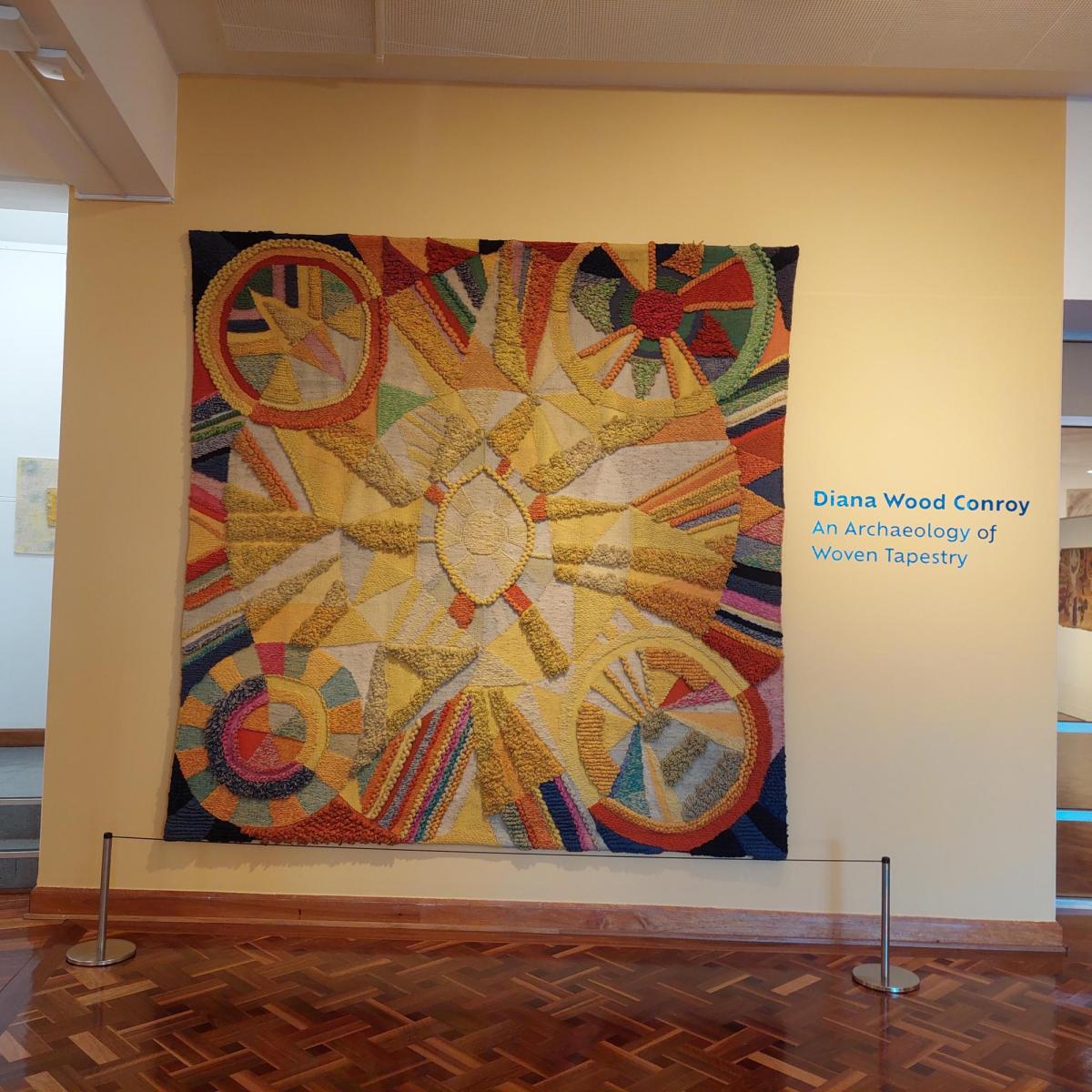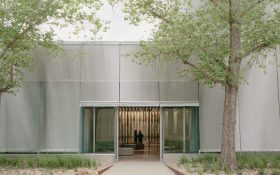Diana Wood Conroy’s weaving lifts tapestries from the decorative and descriptive to the ethereal realm. They are, in the truest sense of the word, awesome.
This is evident from the entry to the exhibition space, where the 2.7-square metre work, The Glory of the Lord appears to illuminate the foyer. Commissioned for the dining hall at Menzies College in Macquarie University by architectural practice Noel Bell Ridley Smith and Partners in 1973, the tapestry is reminiscent of an intricately designed stained glass window. By using woollen threads of different lengths and thickness, Wood Conroy gives the tapestry texture and three-dimensionality.
Read: Vale to celebrated weaver Liz Williamson
Where do you find a loom big enough to weave a tapestry of this size? The answer is: you don’t. Instead, Wood Conroy used the cross beam of the house that her husband Joseph built in Bellingen as the top of her loom and secured the warp threads (made of linen cloth for this work) to a beam that lay on the floor.
This adds new meaning to the modern practice of “working from home”. We are fortunate that this tapestry survives, as it was only discovered in a storeroom at Macquarie University as a result of curating this exhibition. Six of Wood Conroy’s other commissions from the 1970s were probably destroyed along with the steel and glass buildings for which they were created. Only the artist’s designs remain. It’s a tapestry travesty and perhaps symptomatic of this nation’s ambivalent relationship with art.
Visitors who venture to the mezzanine level of the exhibition space will be rewarded with a glimpse into Wood Conroy’s designs for her tapestries and correspondence with some of the clients. The final design is done on graph paper, so that it can be more easily translated to the larger grid of a loom. A folder with multiple designs for tapestries is displayed in a glass showcase. I was itching to turn the pages and see more than one design. It’s a shame that the gallery hasn’t digitised the pages and created a virtual book that could have been viewed on a touchscreen in the space.
Wollongong Art Gallery is to be commended for the hang, which makes full use of sightlines, the views over the gallery space from the mezzanine level and allowing visitors to see both the front and the back of some of the tapestries. The time-lapse video of Wood Conroy weaving What must I do now? over 400 hours is mesmerising and an insight into her dedication to the art form. You can download the recording via a QR code which, in a stroke of quirky genius, is woven too.
If the title of the exhibition An archaeology of woven tapestry has piqued your curiosity, you will not be disappointed. Professor Wood Conroy trained as an artist and archaeologist and worked on digs drawing artefacts in Cyprus, Italy and Greece in the 1960s. Archaeologists document their discoveries on a grid, so it was a small conceptual side-step for Wood Conroy to move into tapestry, which also works on a grid.

Some of Wood Conroy’s tapestries are inspired by sixth century mosaics, another art form that develops through patterns overlaid on a grid. In the Western world, we divide the landscape by grids of roads and streets in cities, and fields and fences in the country. This linear way of ordering the world is not a concept in Australian Aboriginal cultures, where Wood Conroy was inspired by the flora and fauna of the Tiwi Islands. These are some of the most textural and three-dimensional works in the exhibition.
While tapestries are the primary art form in her oeuvre, Wood Conroy also works with watercolours, gouache, gesso and ochre on paper and canvas. The impressions of her experiences at archaeological excavations, on sacred sites in Australia and visits to see the remnants of the Shellal mosaic at the Australian War Memorial are extracted from her subconscious and woven into her extraordinary tapestries.
Read: Exhibition review: Searching Chords: Susie Choi, Mitchell Fine Art
The word “textile” has the same Latin root as the word “text”, and these tapestries will speak to you of the timelessness, rhythms and cycle of life, if you let them. The exhibition catalogue is very informative, but still left me wanting to know more about this exceptional artist and why she traded an easel for a loom. Diana Wood Conroy: An Archaeology of Woven Tapestry presents 10,000 hours of weaving, 60 years of artistic creativity and a virtuosic collection. Run, don’t walk to see it before it closes.
Diana Wood Conroy: An Archaeology of Woven Tapestry will be displayed at Wollongong until 1 September 2024.





